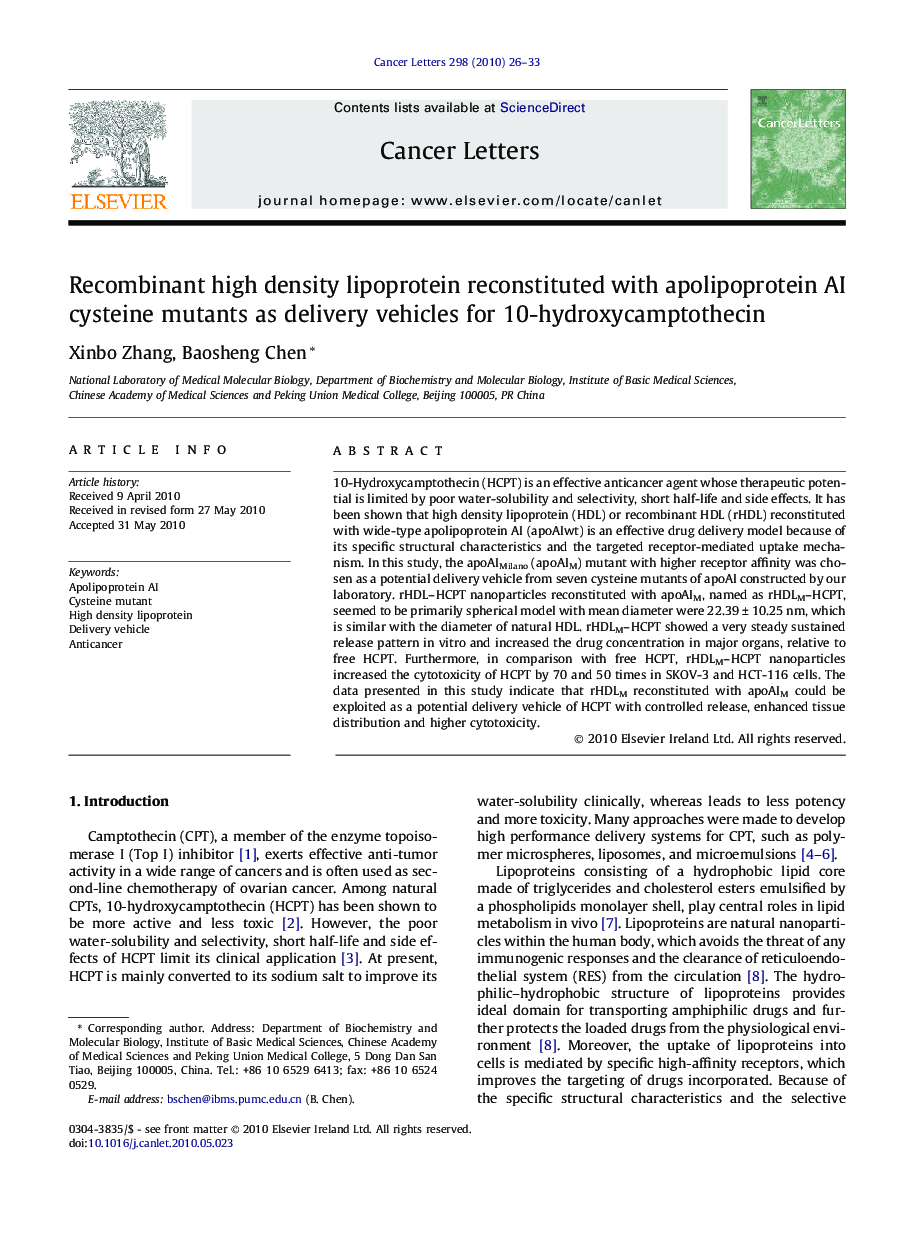| Article ID | Journal | Published Year | Pages | File Type |
|---|---|---|---|---|
| 2113872 | Cancer Letters | 2010 | 8 Pages |
10-Hydroxycamptothecin (HCPT) is an effective anticancer agent whose therapeutic potential is limited by poor water-solubility and selectivity, short half-life and side effects. It has been shown that high density lipoprotein (HDL) or recombinant HDL (rHDL) reconstituted with wide-type apolipoprotein AI (apoAIwt) is an effective drug delivery model because of its specific structural characteristics and the targeted receptor-mediated uptake mechanism. In this study, the apoAIMilano (apoAIM) mutant with higher receptor affinity was chosen as a potential delivery vehicle from seven cysteine mutants of apoAI constructed by our laboratory. rHDL–HCPT nanoparticles reconstituted with apoAIM, named as rHDLM–HCPT, seemed to be primarily spherical model with mean diameter were 22.39 ± 10.25 nm, which is similar with the diameter of natural HDL. rHDLM–HCPT showed a very steady sustained release pattern in vitro and increased the drug concentration in major organs, relative to free HCPT. Furthermore, in comparison with free HCPT, rHDLM–HCPT nanoparticles increased the cytotoxicity of HCPT by 70 and 50 times in SKOV-3 and HCT-116 cells. The data presented in this study indicate that rHDLM reconstituted with apoAIM could be exploited as a potential delivery vehicle of HCPT with controlled release, enhanced tissue distribution and higher cytotoxicity.
